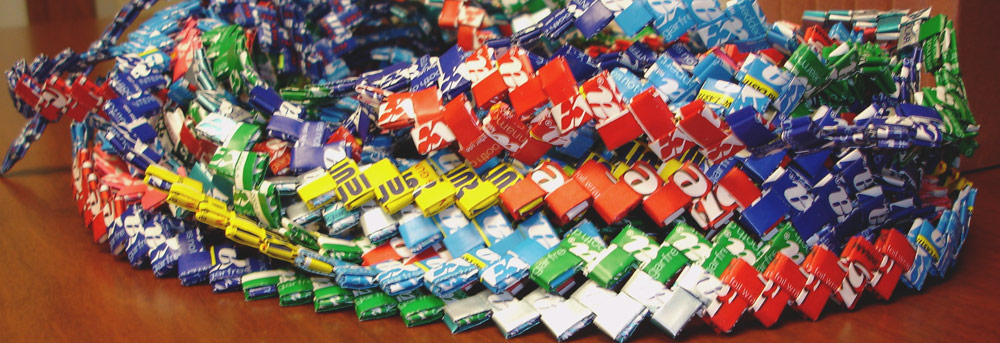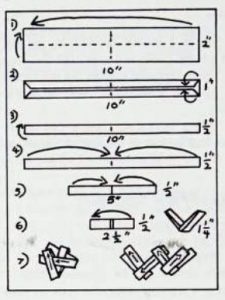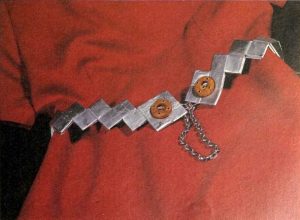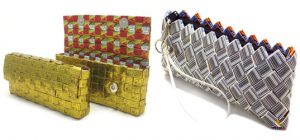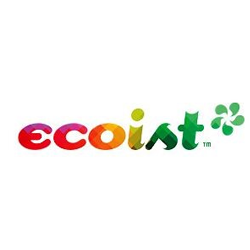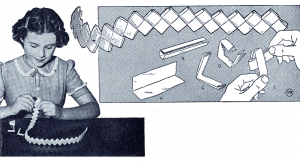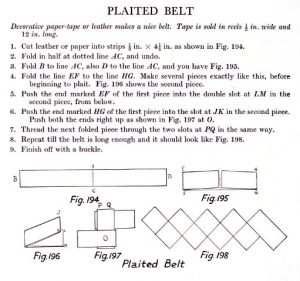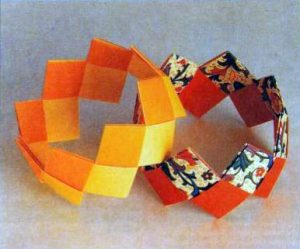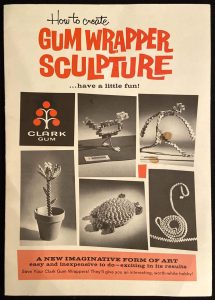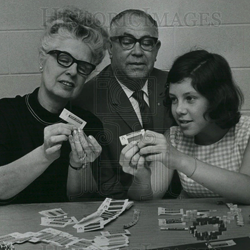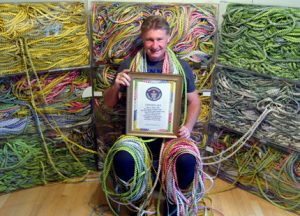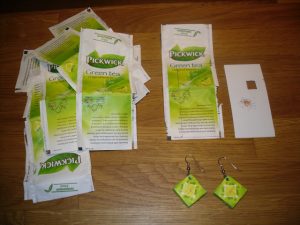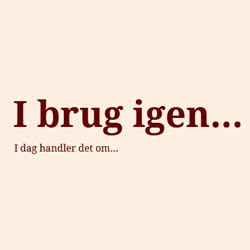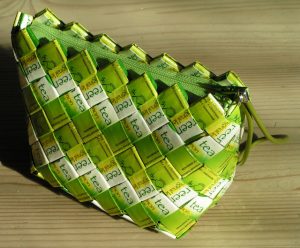This was a popular hobby in the 1960’s. It is unknown when this fad began or when it reached the height of popularity in the United States. According to Gary Duschl, the current record holder of the world’s longest gum wrapper chain, the practise reached Canada in the 1960’s.
This technique may have originated from Mexican paper weaving, or from Polynesian weaving of palm fronds.
As a folk art, paper weaving is a craft practiced in prisons and other institutions but also as hobo art, and at children’s summer camp. Prisoners use cigarette wrappers, potato chip bags etc. – any kind of paper that works. Convicts weave paper to make frames, cup holders, jewelry boxes, scrap books, crosses, miniature churches and houses.
One Hispanic inmate calls it “tejido” or netting, and says it reminds him of the fishing nets in the village where he grew up. “Maybe it’s my Indian heritage, being close to nature, or maybe I’m just behind the times.”
In a book on American children’s folklore a Gum-Wrapper Love Chain tradition is described:
To make a love chain of gum wrappers, spread open the wrapper. Then fold both ends toward the middle forming a V shape. Make several this way, inserting one inside the other’s flaps. After reaching the height of your boyfriend, hang the chain in your bedroom above or beside your bed. This process will bring your boyfriend to you. Some girls say that the longer you made it the greater your love.
It was also known as a Boyfriend chaser
It was 1963 and we called it a Boyfriend Chaser. I’m not sure where it got that name, but you were supposed to make it as long as your boyfriend was tall.
Retired Ruth
It was also called bubble gum wrapper paper chain because bubble gum wrappers were used originally.
In Estonia they are called Hakaketju which translates as ‘Hook Chain”.
Sources
Cell block visions – Folk Arts
Simon Bronner’s American Children’s folklore “We made it ourselves” Gum-Wrapper Love Chain, 1988.
Purses made from candy wrappers, etc – The Purse Project
